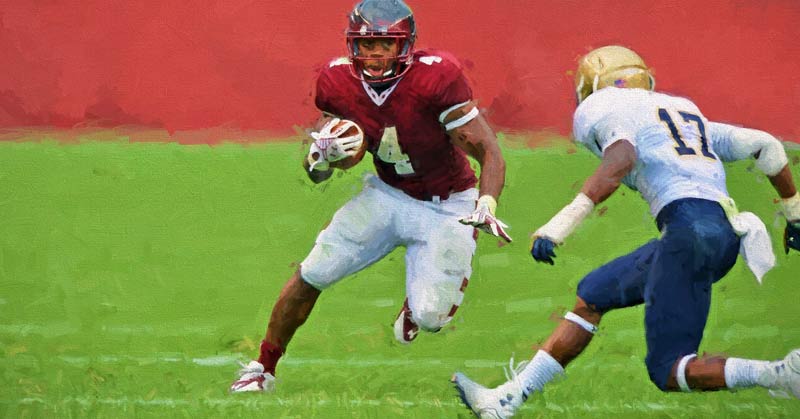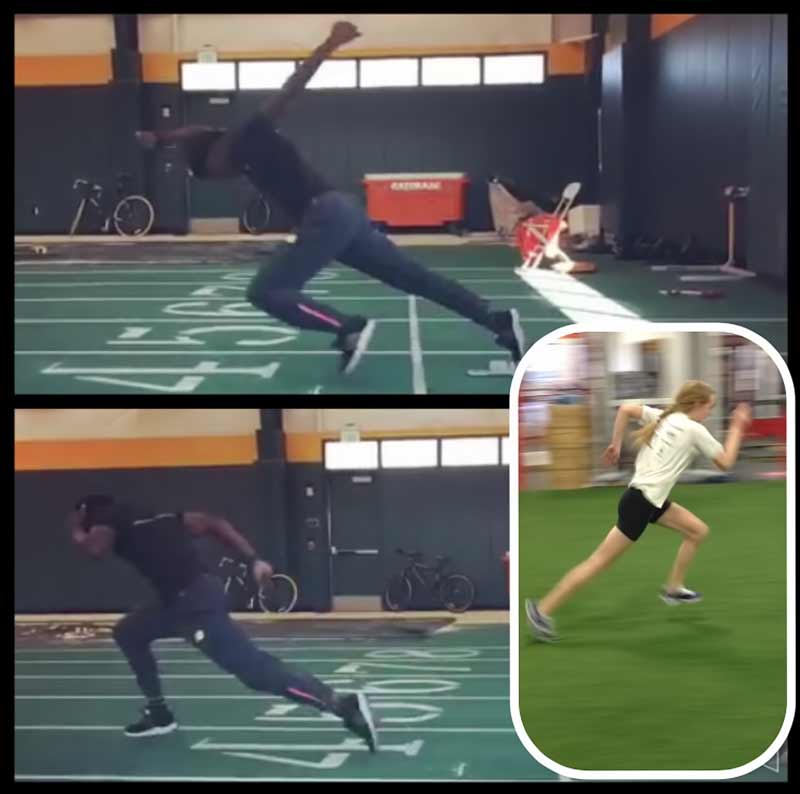
By Matt Gifford
Great strength and speed coaches seek simplicity but understand the ambiguity of sport. To properly select the most appropriate exercises we need to understand the carry over that our prescriptions have towards sporting needs, limiting factors and desired end goals. Anatoliy Bondarchuk first explored this topic in his strength and conditioning classic, “Transfer of Training in Sports.” Bondarchuk’s premise begins with menu items that have general transfer and builds up to specific developmental exercises that best lead to one’s highest competitive goals.
Proper progressions bleed out the generals to the specifics and allow for greater long-term success and skill retention. Sprint and movement training is of the highest priority to nearly every field sport athlete and coach. My experience as an athlete and coach have pointed me towards a need to be more accurate and realistic when choosing and setting expectations with respect to acceleration sprint exercises, protocols and technical models.
Acceleration defines itself as the rate at which an object changes its velocity. In field sport, this speed component shows itself in offensive or defensive points of attack in respect towards specific rules and the host environment. When we think of the use of acceleration speed in sport, we can understand the spectrum of constraints and variables is very large. In general, we accelerate towards or away an opponent or goal to score or defend. American football, for instance, requires the acceleration pattern bandwidth of 6 inches to 120 feet. An offensive lineman or defensive lineman may accelerate six inches towards contact or have a need to accelerate with an arc pattern to attack a quarterback. On the perimeter, the wide receiver position has an acceleration pattern that may involve three to five pushes on a first level (0-10 yards) route or possibly 10 to 25 strides on a deep post or “go” route (20 to 60 yards). To expand, once we put a ball in play, change the surface or add opponents we can see the complexity one may have in defining generals or prescribing one size fits all models.
The purpose of acceleration is to push oneself into a tall sprint posture. - Vince Anderson Share on XThe acceleration model the athlete applies and the coach teaches is dependent upon power levels, motor pattern recognition, and also event specificity. Expectations will be different in comparison of an elite level male 100m sprinter, a college football running back, and a 13-year-old female basketball player. In theory, the sprinter may serve as the best point of reference for 1st step position and acceleration patterning. However, reality showcases a different environment and set of rules for the field sport athlete. Furthermore, theory and experience point us towards an ever slowly progressing 40 to 45-degree position that best suits the 1st stride acceleration angle for the speed athlete. Nevertheless, reality will show us that many young or less powerful athletes will not attain this desired angle.

Figure 1. Theory versus Reality: Each athlete is unique.
In our efforts to chase the perfect sprint, identifying the athlete’s limiting factors is of highest priority in seeking skill mastery. The education process lays the ground work for the coach and athlete. Teach the athlete through dialogue, through example and imprint what is learned through drills that best produce the most advantageous “feeling” state. Seek quality and aim beyond perfect. With that being said, the best race car drivers are only as good as the engine and vehicle they operate. Improving the athlete’s bio-motor abilities (mobility, coordination, strength, endurance, speed) will lead to a greater expression of what the brain wants to do. Motor learning makes it clear to the strength and conditioning professional that mind, muscle, and movement need congruence. Preceding sprinting with skill refinement through warm up and certain potentiation drills will lay the foundation for more effective full speed movement.
While the athletes with severe limiting factors may not want to jump into sprint training before certain deficiencies are addressed, the two-point sprint start may be the most appropriate starting point for nearly every athlete early in their training career or season’s cycle. Through my experience as an athlete and coach, the two-point start will allow most athletes to hold and create desired tension and position while learning how to push the ground effectively to create force and desired angles. As bio-motor abilities and technical comprehension progress, so can our exercise choices until we eventually meet specific demands. Our KPI’s (“key performance indicators”) should be based on postural, strength, and power standards. In general, save the specific sprint modalities for those with a high training age or wait to implement on a yearly cycle until pre-season training before sport participation.
Video 1. Demonstration of two-point start.
Practical application for a “young/novice/low training age” athlete will mean that we spend more time on generals and progress only when the athlete shows competence in meeting certain bio-motor standards. If an athlete can’t extend and hold the position from a simple two-point start, why should we move to the ground or make this pattern more complex?
A typical workout for an intermediate to elite level athlete with a higher training age will entail more complexity as long as those bio-motor standards are met. Save yourself the trouble and don’t move forward until excellence is attained. A constant goal for the athlete and coach will be to raise the athlete’s maximal output. A typical workout for a college linebacker or a professional basketball player will be to start the session with sprint prep work (potentiate) and continue live speed development with a few warm up or touch set reps.
- Potentiation/ Speed Prep
- Two-point start accelerations @ 10,20,30, 40 (*increase or maintain maximal output, fully recovery between rep)
- Specific Acceleration Work (200-300 yards or meters, Linebacker stance sprints from 5 to 20 yards, may include curve runs, lateral sprints, etc., incomplete recovery or play clock recovery as determined by specific mesocycle)
- Sub maximal Tempo work
Video 2. Acceleration work with curve runs, lateral sprints, and incomplete recovery.
Please share so others may benefit.
[mashshare]

